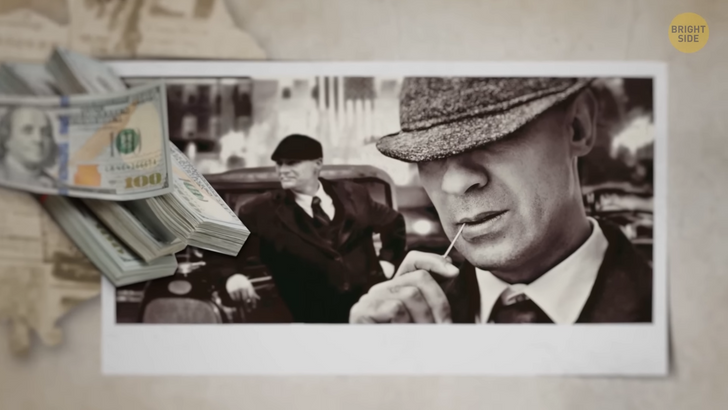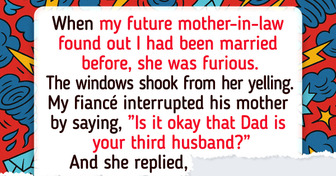14 Unresolved Nanny Stories That Keep Us Guessing


They were known to wear fitted jackets, lapeled overcoats, and peaked newsboy caps. Because of their elegant looks, you surely couldn’t miss them out on the streets — they also made sure you wouldn’t.
Full of young men between 12 and 30 years old, this gang soon became a serious problem for Birmingham police. Their rudeness and mischief were soon the stuff of legends. Years later, the curator of the West Midlands Police Museum, said that they would target anyone who appeared weak or unfit. Anything that could be stolen, they’d take it.

Their name? The Peaky Blinders. You might have heard of them because of the famous TV show, but it’s not all fiction. There’s still a bit of controversy regarding how they got their name. But for the most part, “peaky” was a word used for any flat cap with a peak. As for the slang term “blinder,” this is still in use today in Birmingham. It was once widely used to show something or someone looking dapper.
Using the cap to hide their faces from people is another reason why they may have been called the “Peaky Blinders”. They didn’t really want to be recognized by the people or the police. These days they’re considered the first modern youth movement. The way they dressed, their sense of style, and their slang, stood at the base of other 20th-century youth movements, like punks for example.
The Peaky Blinders — and other gangs like it — came to be because of the poor living conditions and economic challenges of industrial England in the late 19th century. They emerged because of how poor people were. Young boys had to pickpocket as a means of income. Uneducated men didn’t have a lot of career prospects, so stealing and other criminal activity became a way of life.
The Peaky Blinders became famous for doing it in style, with bell-bottom trousers, pearl buttons, overcoats, silk scarfs, and steel-toed leather boots. They also acted as outrageously as possible. One such story was actually the reason why the creator of Peaky Blinders decided to write the show.

He remembered a little anecdote his dad used to tell, about being sent with a written message to his uncles. He was a little boy at the time and remembered knocking at the door and seeing about eight men sitting at the table, all dressed impeccably and wearing those signature caps.
The most shocking thing of all? The table was covered in money! Some of their first reported activities were written in a newspaper dating from March 1890. By that time, the group was already becoming famous for their wildness. They were actually happy to have their “performances” recorded in the national newspapers!
By the end of the 1800s, this gang included people of a variety of ages, from as young as twelve, up to the age of thirty. The group soon gained organization status through informal hierarchies.
Probably the most powerful member of the Peaky Blinders was a man known as Kevin Mooney. That wasn’t his real name though, it was Thomas Gilbert, but he often changed his last name to avoid arrest.
At the peak of the real-life gang’s power, he was the ringleader. In 1899, local authorities tried to control their activity by placing an Irish police constable in Birmingham. The purpose was to gain greater levels of law enforcement in the area. It was unsuccessful though. The Peaky Blinders had already made stable connections with the local police. So, they continued their activities more or less unbothered whilst the police authority became diminished.

But what sets them apart from other gangs? Their sense of style had a lot to do with their popularity because it was effective in many ways. On one hand, it gave them a great deal of attention and set them apart from other gangsters. More so, the way they dressed showed wealth and luxury. They looked unaffordable to other people around them.
They made sure to extend this look to their family members, which included their wives and girlfriends, who could afford extravagant dresses and coats, unlike other women. Women were equally as involved in these gangs, with evidence of female gang members involved in larger-scale events. Young women would have also dressed themselves to look like gang members, and wore long fringes, colored neckerchiefs, and colored or striped skirts.
This lavish manner of dressing was also a way of defying the police. Officers could easily recognize a man as being a Peaky Blinder but would remain powerless to their wrongdoings. Most of the time they could hardly even remember the faces of the gang members. As to historical accuracy, there are many differences between the show and the real-life gang. First of all, the timing was different.
The real Peaky Blinders were mostly active in the 1890s, not the 1920s as portrayed in the show. That’s because they lost power in the 1910s to the rival gang The Birmingham Boys. Their wrongdoings weren’t as sensational as depicted in the show either. A well-known member of the Peaky Blinders named Harry Fowles was arrested for merely stealing a bicycle.

Henry Lightfoot was the first man ever to be called a Peaky Blinder. He lived on Garrison Lane, in Birmingham, England in the late 19th century. There’s little information on Henry Lightfoot’s life, apart from what was recorded by the police and found by the press.
It’s known that throughout his life he used to work as a caster, molder, metal roller, and painter. He started acting badly when he was about 22 years old. It all started with stealing racing pigeons and eventually lead to single-handedly taking on the Hay Mills police and even to a duel with a detective. Towards the end of his life, he stuck to raising his family.
One of their most famous meeting locations was a pub named The Garrison — which is recreated in the show. It was known as their informal headquarters. In real life though, the building was not as glamorous as seen on TV. The Peaky Blinders were active in Birmingham until about 1910. They were then taken over by a larger gang, called The Birmingham Boys.
This one was led by a man equally as famous named Billy Kimber. His power extended from Birmingham to the North of England and London between 1910 and 1930. His group was known for bookmaking, bribery, smuggling, and whatsoever. Billy Kimber was, for several years, the biggest gang leader in the UK. After many years of clinging to power, Kimber passed away because of his ill health.

But the story doesn’t stop there, as the gang scene was then taken over by the Sabini clan. Their name came from Charles Sabini, an Italian-English man born in Clerkenwell in 1888, whose real name was Ottavio Handley. Dubbed the “King of the Racehorse Gangs”, he dominated London’s underworld for much of the early twentieth century. He oversaw several clubs and had around 100 members in his notorious gang.
Sabini was also known for his many connections in the police and with the authorities. The increasing dominance of other gangs wasn’t the only thing that led to the end of the Peaky Blinders. It started with stricter policing and heavier sentences for the crimes they did. These changes meant that a lot of people left the gang and fewer replaced them.

Plus, young people began to have more opportunities. They had increasingly more access to education and preferred going to school to secure their futures. They also learned to be disciplined. Boxing clubs gave many an alternative to that gang spirit.
One of the things that made these people be part of a gang in the first place was the fact that they felt like they belonged somewhere. So, by the late 1920s, what was left of the Peaky Blinders had relocated to the countryside and mostly disappeared from view of the Sabini clan.











